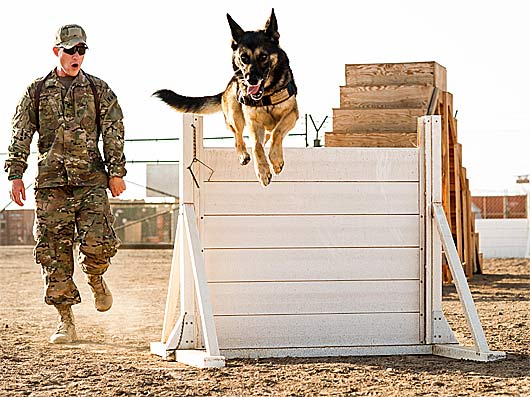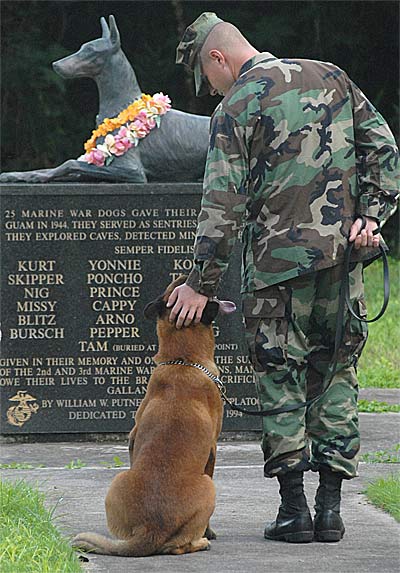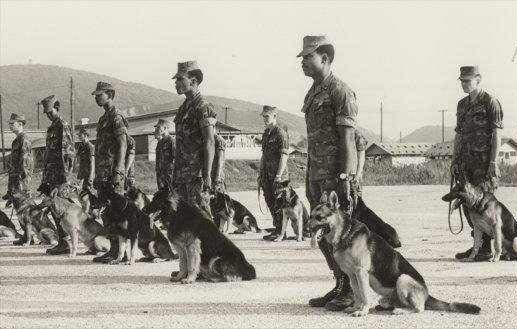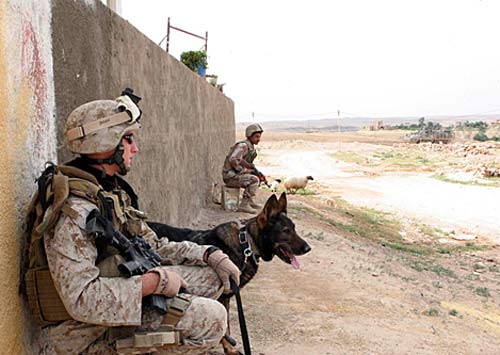American Dogs of War

While the human cost of our military history is well documented, the animal cost of war often receives much less coverage. And yet, animals have been our constant companions in times of war as well as in times of peace. Horses carry man into battle, donkeys help to carry vital equipment and supplies. But what of the dogs of war? Man’s best friend has played an integral role in saving the lives of their owners in war zones. Here are just a few interesting facts about America’s military working dogs, and the essential role they have played on a wide variety of different battle fields.
A Huge Scale Endeavor
Although it isn’t widely reported, the scale in which military dogs have assisted on the battle field is much larger than you might think. The United States War Dogs Association estimates that, since their service began, highly trained dogs have saved approximately 10,000 American lives. This should give some indication of the sheer numbers of dogs involved in military service.

Unlikely to Return Home
America’s military working dogs are sadly much less likely to return home after they have completed their tour of duty than America’s human military professionals. In the Vietnam war, 3,747 dogs were officially listed as active on the battle field but it is estimated that as many as 4,900 military working dogs were involved in the campaign. Of that huge number, just 204 dogs returned to the United States during the 10 year period of the war. Most of the dogs were euthanized, and others were turned over to the South Vietnamese Army, but no real record remains of their fate after this.

A Wide Mix of Breeds
Although most people think about German Shepherds or Dobermans when they think of military working dogs, and it is true that these are the most common breeds in the profession, a wide mix of dog breeds have been used as military working dogs. Labradors, known for their intelligence, are also often chosen as working military dogs while greyhounds were popular war dogs in fifteenth century Mexico. During the First World War, boxers, bulldogs and husky dogs were also regularly utilized, being favored by the Red Cross to pull ambulance carts carrying wounded soldiers. This method was favored throughout the war, as the dogs were smaller targets for snipers than horses, and couldn’t run out of gas like a vehicle could.

Positive Therapeutic Influence
As well as having a positive effect on the lives of military veterans on the battlefield, dogs also have a proven positive therapeutic influence on veterans off the battlefield too, particularly those that are suffering with post-traumatic stress disorder or other kinds of anxiety disorder. These dogs can help to ease anxiety, and give the PTSD sufferer something to connect to and begin to build a normal relationship with. While technically service dogs, rather than military working dogs, these animals utilize the same skills and work with their military owners for the greater good in the same way too.
A Modern History in America
The first record of dogs being active on the battle field in America occurs relatively late-on, during the American-Spanish war of 1898: during this war dogs were used as patrol dogs and appreciated for their enhanced hearing skills, however their use was relatively rare and considered to be the exception rather than the rule. Although several images are available that show dogs alongside soldiers during the earlier American Civil War, these dogs were simply used as mascots and companions, but were not combatants or considered to be an active part of the war effort, as modern military dogs are. During World War One the American animals involved in the war were similarly used for companionship and comfort rather than as true military working dogs, butt in the Second World War the US Army employed Husky dogs to help rescue crashed pilots in Greenland.
Fallen Heroes
On the Lackland Air Force Base in Texas stands an official memorial which is designed to honor all of the incredible military working dogs who lost their lives in order to save the lives of their comrades and, just like those human members of the armed forces, give their lives for their country. The memorial was dedicated in October 2013 and features four working dogs protecting a lone serviceman.
See also Navy Seal Dogs Captured Bin Laden
Post contributed by Anne Collinge

